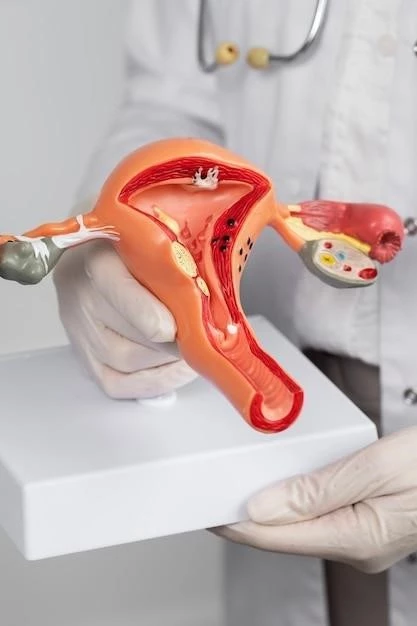Introduction to Fallot Tetralogy
Fallot tetralogy is a congenital heart defect characterized by cyanosis, pulmonary stenosis, ventricular septal defect, overriding aorta, and right ventricular hypertrophy. It requires prompt cardiology intervention and surgery.
Definition and Overview
Fallot tetralogy, a complex congenital heart defect, is characterized by a combination of four heart abnormalities⁚ pulmonary stenosis, ventricular septal defect, overriding aorta, and right ventricular hypertrophy. This results in abnormal blood flow, oxygen levels, and can lead to cyanosis. Prompt diagnosis and management by a cardiologist are crucial. Surgical intervention is often necessary to correct the structural abnormalities. Anesthesia considerations must be tailored to the specific needs of patients with Fallot tetralogy. Echocardiogram is a key diagnostic tool for assessing the extent of cardiac anomalies. Patients may experience complications both during and after surgery, emphasizing the importance of meticulous care and follow-up to address potential issues. Long-term prognosis and quality of life can significantly improve with appropriate treatment, rehabilitation, and regular cardiology monitoring.
Historical Background
Fallot Tetralogy was first described by French physician Étienne-Louis Arthur Fallot in 1888٫ pioneering the understanding of complex congenital heart defects. Fallot’s detailed observations laid the foundation for the modern diagnosis and management of this condition. Over the years٫ advancements in cardiology٫ pediatric surgery٫ and anesthesia have significantly improved the outcomes for patients with Fallot Tetralogy. The historical evolution of treatment strategies reflects the dedication of medical professionals to enhance the quality of life and long-term prognosis for individuals born with this challenging cardiac anomaly.
Understanding the Congenital Heart Defect
Fallot Tetralogy arises from a combination of cardiac abnormalities, impacting blood flow dynamics and oxygen levels. Precise cardiology evaluation and management are critical for optimal patient outcomes.
Causes and Risk Factors
The exact causes of Fallot Tetralogy are not fully understood but are believed to involve a combination of genetic and environmental factors. Risk factors may include maternal conditions during pregnancy, genetic mutations, or chromosomal abnormalities. Factors such as maternal age, certain medications, or illnesses can also contribute to the development of this congenital heart defect. Understanding the interplay between these factors is crucial for early detection, management, and potential prevention strategies for Fallot Tetralogy.
Pathophysiology of Fallot Tetralogy
Fallot Tetralogy’s pathophysiology involves a combination of structural heart defects leading to abnormal blood flow. Pulmonary stenosis results in limited blood flow to the lungs, while the ventricular septal defect allows mixing of oxygenated and deoxygenated blood. The overriding aorta causes oxygen-poor blood to flow to the body, leading to cyanosis. Right ventricular hypertrophy develops due to increased workload. These malformations challenge normal cardiac function, necessitating timely diagnosis, intervention, and long-term cardiology monitoring to reduce complications and enhance patient outcomes.
Clinical Presentation of Fallot Tetralogy
Fallot Tetralogy manifests with cyanosis, pulmonary stenosis, ventricular septal defect, overriding aorta, and right ventricular hypertrophy, impacting cardiac function and oxygenation levels.
Cyanosis and its Significance
Cyanosis, a hallmark of Fallot Tetralogy, results from low oxygen levels in the bloodstream due to abnormal cardiac anatomy. It presents as a bluish discoloration of the skin, lips, or nails and indicates compromised oxygenation. Cyanosis is a critical clinical indicator of inadequate blood flow to the lungs and body, highlighting the severity of the congenital heart defect and the urgency for cardiology evaluation and intervention. Monitoring cyanosis levels is crucial for assessing the patient’s oxygenation status and overall cardiovascular health.
Pulmonary Stenosis and Ventricular Septal Defect
Pulmonary stenosis in Fallot Tetralogy causes narrowing of the pulmonary valve, restricting blood flow to the lungs. Concurrently, the ventricular septal defect allows mixing of oxygen-rich and oxygen-poor blood, further complicating oxygen delivery. These structural defects contribute to the characteristic cyanosis seen in patients with Fallot Tetralogy. Understanding the interplay between pulmonary stenosis and the ventricular septal defect is crucial in managing the complex hemodynamic challenges associated with this congenital heart condition.
Overriding Aorta and Right Ventricular Hypertrophy
In Fallot Tetralogy, the overriding aorta sits above the ventricular septal defect, allowing oxygen-poor blood to be distributed to the body. This leads to cyanosis and compromises systemic oxygenation. Additionally, the right ventricular hypertrophy develops due to increased workload from pumping blood against the pulmonary stenosis. The combination of these abnormalities places significant strain on the heart’s function and highlights the critical need for prompt diagnosis, surgery, and ongoing cardiology care to manage these challenges and optimize patient outcomes.
Diagnosis and Management
Timely diagnosis of Fallot Tetralogy using echocardiogram is crucial. Surgical interventions and specialized anesthesia play key roles in effective management and long-term care.
Diagnostic Tools⁚ Echocardiogram
An echocardiogram is a fundamental diagnostic tool in assessing the structural abnormalities characteristic of Fallot Tetralogy. This imaging modality provides detailed information on the heart’s anatomy, blood flow patterns, and cardiac function. By visualizing the pulmonary stenosis, ventricular septal defect, and other associated anomalies, echocardiography aids cardiologists in formulating an accurate diagnosis and developing a tailored management plan. Continuous monitoring through echocardiograms is essential for tracking disease progression, evaluating surgical outcomes, and ensuring optimal care for individuals with Fallot Tetralogy.
Surgical Interventions
Surgical interventions are often required to correct the structural defects present in Fallot Tetralogy. Procedures may include repairing the ventricular septal defect, relieving the pulmonary stenosis, and addressing the overriding aorta. Surgeons aim to optimize cardiac function, improve oxygenation, and reduce cyanosis through these interventions. Post-operative care is essential to monitor for complications, ensure proper healing, and support the patient’s recovery. Surgical advancements and techniques continue to enhance outcomes for individuals with Fallot Tetralogy, highlighting the importance of a multidisciplinary approach involving cardiology, surgery, and anesthesia teams.
Anesthesia Considerations
Anesthesia plays a crucial role in the management of patients undergoing surgical correction for Fallot Tetralogy. Anesthesiologists must carefully consider the unique cardiac anatomy, potential hemodynamic challenges, and the need to maintain systemic oxygenation. Tailoring anesthetic agents, ventilation strategies, and monitoring techniques is vital to ensure optimal perioperative outcomes. Close collaboration between the anesthesia team, cardiologists, and surgeons is essential to provide safe and effective care during the surgical procedure, minimize risks, and support the patient’s overall well-being.
Treatment and Rehabilitation
Addressing tet spells promptly and implementing post-surgery rehabilitation programs are essential components in managing Fallot Tetralogy and optimizing patient recovery.
Addressing Tet Spells
Tet spells, characterized by sudden exacerbations of cyanosis and hypoxemia, require immediate intervention in patients with Fallot Tetralogy. Treatment involves calming the individual, increasing systemic vascular resistance, and improving pulmonary blood flow to alleviate the spell. Measures may include providing supplemental oxygen, administering intravenous fluids, and using medications to manage symptoms. Recognizing and effectively managing tet spells are critical in preventing serious complications and safeguarding the well-being of individuals with Fallot Tetralogy.
Post-Surgery Rehabilitation
Post-surgery rehabilitation plays a crucial role in the recovery of individuals who have undergone corrective procedures for Fallot Tetralogy. Rehabilitation programs focus on physical conditioning, cardiac function optimization, and emotional support. Cardiac rehabilitation specialists tailor exercise regimens to improve cardiovascular health and endurance. Psychological counseling may be offered to address emotional challenges post-surgery. Supervised rehabilitation under the guidance of a multidisciplinary team aids in enhancing quality of life, promoting recovery, and minimizing potential complications in patients with Fallot Tetralogy.

Potential Complications
Post-operative risks and long-term complications pose significant challenges in managing Fallot Tetralogy, necessitating proactive monitoring and intervention strategies to minimize adverse outcomes.
Post-Operative Risks
Following surgical correction for Fallot Tetralogy, patients may face post-operative risks such as arrhythmias, residual shunts, and pulmonary valve regurgitation; Complications like infections or bleeding require vigilant monitoring and prompt intervention. Cardiologists and healthcare teams closely oversee post-operative recovery to detect and manage these risks efficiently. Timely recognition and treatment of post-operative complications are imperative in ensuring successful outcomes and minimizing adverse effects on the patient’s health and well-being.
Long-Term Complications
Long-term complications of Fallot Tetralogy may include heart failure, arrhythmias, pulmonary regurgitation, and exercise intolerance. Individuals with this condition require lifelong cardiology follow-up to monitor heart function, detect complications early, and adjust treatment strategies accordingly. Addressing long-term complications involves a multidisciplinary approach, encompassing medication management, lifestyle modifications, and potential reintervention strategies to optimize the overall health and quality of life of patients with Fallot Tetralogy.
Prognosis and Follow-Up Care
Long-term outlook and cardiology follow-up are crucial for managing Fallot Tetralogy, optimizing outcomes, and ensuring ongoing cardiovascular health for patients.
Long-Term Outlook
The long-term prognosis for individuals with Fallot Tetralogy can vary based on the extent of cardiac abnormalities, surgical outcomes, and any associated complications. With appropriate treatment, rehabilitation, and consistent cardiology follow-up, many patients can lead fulfilling lives. Monitoring for potential issues such as arrhythmias, heart failure, or pulmonary regurgitation is essential in maintaining cardiac health. Proactive management strategies, including lifestyle modifications and timely interventions, play a pivotal role in enhancing the long-term outlook and quality of life for individuals living with Fallot Tetralogy.
Importance of Cardiology Follow-Up
Regular cardiology follow-up is paramount for individuals with Fallot Tetralogy to monitor cardiac function, assess for complications, and adjust treatment plans as needed. Through routine evaluations, cardiologists can detect changes in heart health, optimize medication regimens, and provide guidance on lifestyle modifications. Cardiology follow-up visits also offer an opportunity to address any concerns, educate patients about self-care strategies, and ensure a comprehensive approach to managing the long-term well-being of those living with Fallot Tetralogy.
